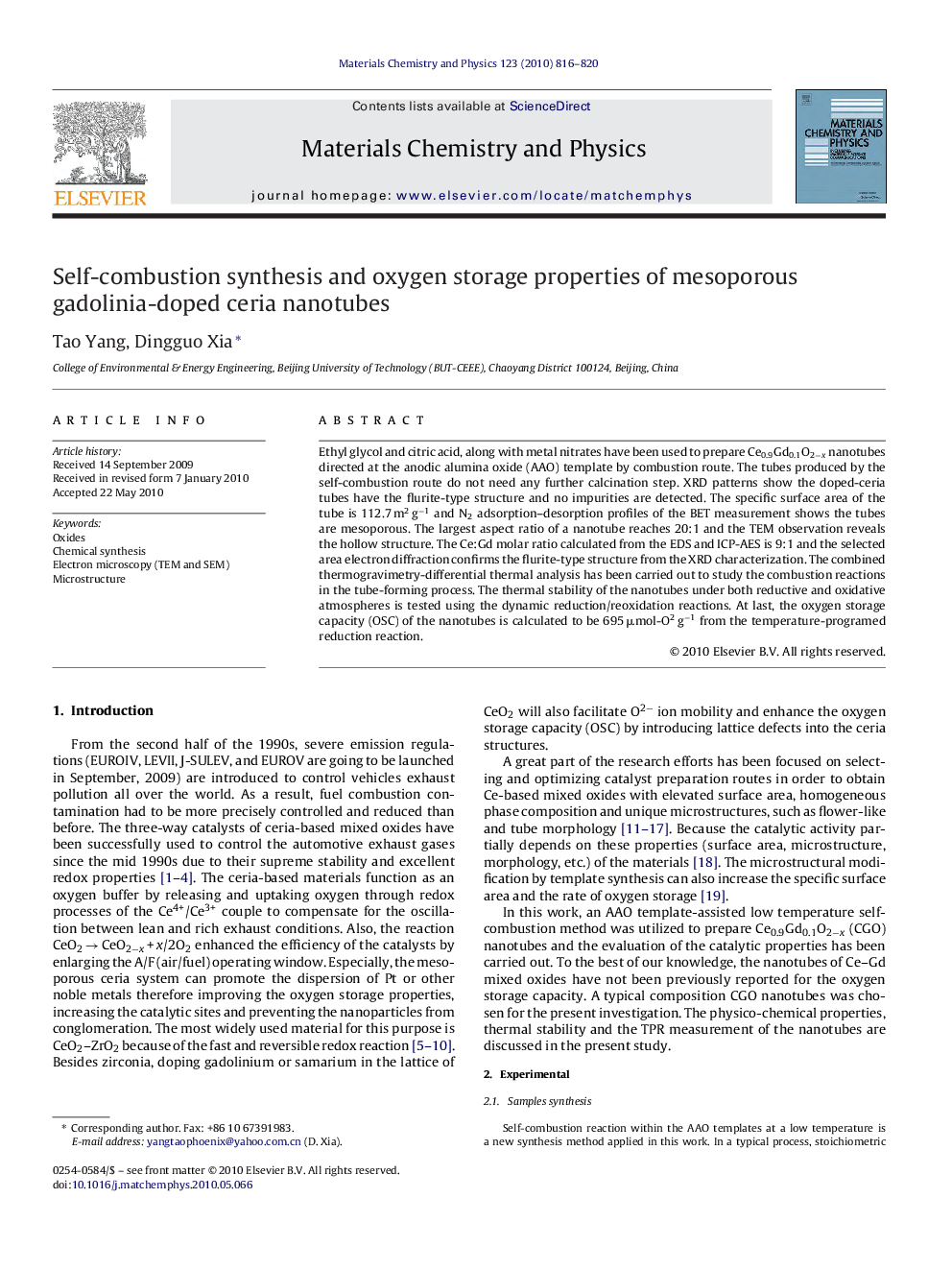| Article ID | Journal | Published Year | Pages | File Type |
|---|---|---|---|---|
| 1525250 | Materials Chemistry and Physics | 2010 | 5 Pages |
Ethyl glycol and citric acid, along with metal nitrates have been used to prepare Ce0.9Gd0.1O2−x nanotubes directed at the anodic alumina oxide (AAO) template by combustion route. The tubes produced by the self-combustion route do not need any further calcination step. XRD patterns show the doped-ceria tubes have the flurite-type structure and no impurities are detected. The specific surface area of the tube is 112.7 m2 g−1 and N2 adsorption–desorption profiles of the BET measurement shows the tubes are mesoporous. The largest aspect ratio of a nanotube reaches 20:1 and the TEM observation reveals the hollow structure. The Ce:Gd molar ratio calculated from the EDS and ICP-AES is 9:1 and the selected area electron diffraction confirms the flurite-type structure from the XRD characterization. The combined thermogravimetry-differential thermal analysis has been carried out to study the combustion reactions in the tube-forming process. The thermal stability of the nanotubes under both reductive and oxidative atmospheres is tested using the dynamic reduction/reoxidation reactions. At last, the oxygen storage capacity (OSC) of the nanotubes is calculated to be 695 μmol-O2 g−1 from the temperature-programed reduction reaction.
